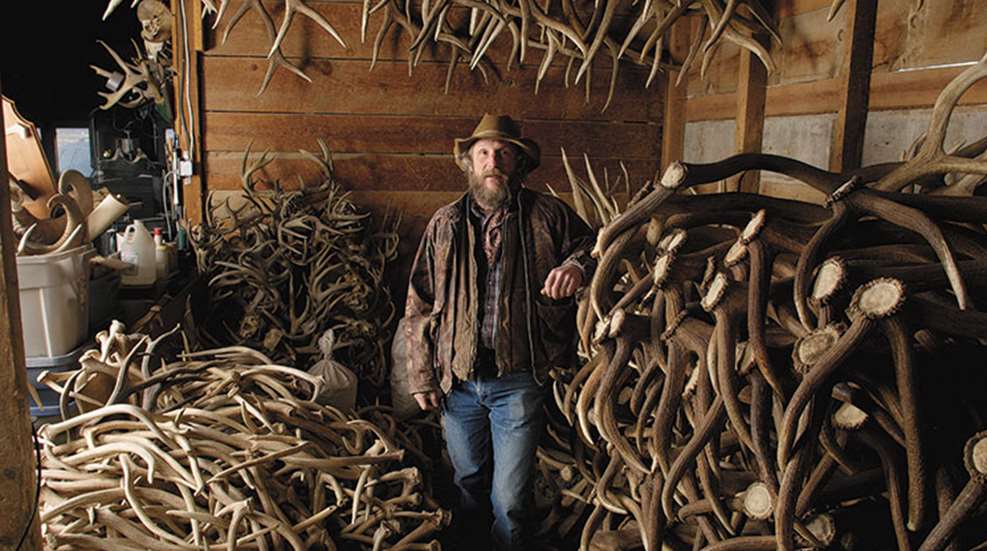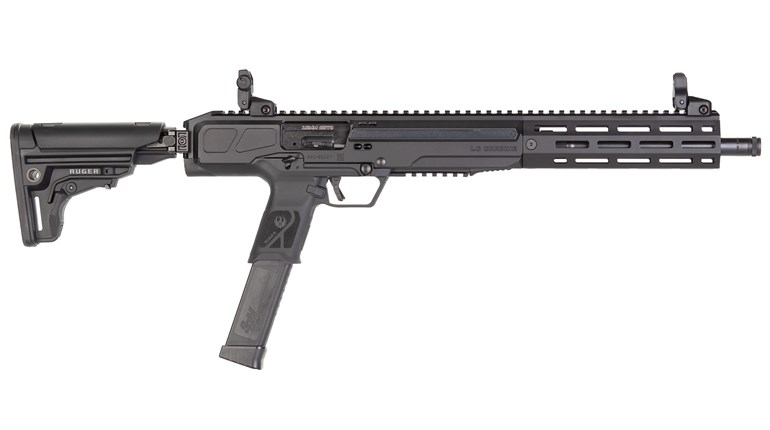
Roy Rasmussen was just 19 years old when he got the phone call that set him on his career path. A pal from high school had found some shed elk antlers here and there in the Montanan countryside and needed someone to drop him off and to pick him up as he collected the sheds. He offered Rasmussen 10 percent of the take. It seemed like easy enough money. Rasmussen made $35 for a couple hours of his time.
But his friend made $350.
His friend called back a week later with the same request. This time, while waiting for the friend to hike back to the truck, Rasmussen took a walk and found a five-point elk antler. His friend paid him $35 for his time. The antler buyer also gave Rasmussen $35 for that single elk shed.
“I was hooked,” says Rasmussen. “Right after that, I went out and found 10 or 12 antlers. Suddenly I had $300 of my own. Wow!”
Today, Rasmussen, who is now 50 years old, has spent three decades in the shed antler business as owner and operator of Heads, Hides, & Horns, in Helena, Mont. Born and bred in Montana, Rasmussen grew up hunting, fishing and trapping. He saw making money from sheds as just another way to live off the land. Not that everyone felt it was a grand idea. “Dad thought I was totally crazy when I started picking up and selling horns,” Rasmussen remembers.
When Rasmussen was growing up in the 1960s and 70s, no one bought sheds. There was no demand for trophy antlers. But, in the late 1970s, brokers began paying cash for elk sheds. A growing medicinal market in Asia was driving demand.
Young Rasmussen started shed hunting in earnest. He and his friends drove all over to glass winter ranges. “Gardner, Livingston, around Bozeman, the winter range up near Augusta … we were looking for herds,” he says. “In April we'd come back and pick up the horns. Back then there was no competition at all.”
Initially, shed brokers only wanted fresh, brown elk antlers, but then they started paying lesser amounts for B-Grade elk antlers (the hard, white ones that are a year old or more). “Then there was interest in brown deer horns, too.”
So how'd he become a shed broker? That happened for Rasmussen essentially by accident. His shed collecting buddies wanted cash now, and asked Rasmussen to buy their antlers. Sensing an opportunity, he placed a small advertisement in a local newspaper and the sheds started pouring in. Soon afterwards, Rasmussen got a call from an East Coast antler broker. The guy wanted all the horns Rasmussen could provide, and even fronted him money so Rasmussen could buy up larger quantities of sheds.
Roy Rasmussen, antler buyer and seller, had arrived.
Today, Heads, Hides, & Horns deals in shed antlers by the tons. It's essentially a one-man operation, though Rasmussen's wife and sons help out at peak times. People bring him their antlers and he travels to gatherings like the Dubois Antler Rendezvous, in Dubois, Wyo., where hundreds of shed hunters and dozens of antler brokers converge every May.
Over the decades, Rasmussen has seen big changes in the shed business-some for the better; many, some downright problematic.
As with any commodity, economics drive the shed market. When Rasmussen got started, elk sheds were bought almost exclusively for use in Asian medicinal products. Broken antlers were fine, as they were all ground up, anyway, and put into various supplements. Then, in the mid-1990's, people started making elk antler chandeliers and knives with deer antler handles. Other people started buying these products. Today it really matters what the antlers looked like.
Computers and the Internet have changed the shed business, too. Today, trophy racks and huge sheds can sell for big money. The Internet posts thousands of these items for sale. But all that, Rasmussen thinks, has led to unrealistic expectations. Every year, he's approached by hunters who've taken bull elk carrying Boone & Crockett-caliber racks. They get on Internet, do a little trophy antler research, and figure Rasmussen should pay them thousands and thousands of dollars for these racks.
“But, realistically, to me, those racks are worth about six dollars a pound,” says Rasmussen. “Unless it's really cool, has something really unique about it? Then it might be $10 a pound, or maybe $200 for a set. That guy, when I tell him that, is really disappointed. He might get pretty mad at me, too.”
The money to be made from sheds has led to some unscrupulous types chasing deer and elk with snowmobiles and ATVs to make the animals drop their antlers. But most of the people he deals with are good folks, Rasmussen says; they're grateful they found a couple hundred dollars in sheds so they can buy some groceries and fill the gas tank.
He still remembers those days when he was just starting out, a struggling shed broker with a pickup truck and a desire to make it on his own.
“I was going door to door, driving all over Montana and Wyoming, sleeping in the back of the pickup truck when I had to,” he remembers. “I met the neatest people. People who'd give you the shirt off their backs-and they probably only had one shirt! That part, I do miss.”
Rasmussen isn't getting rich. Yet, he's able to make a living from a natural, renewable resource and he feels that's important. He has free time to spend with his wife and sons, gets to meet interesting people in the shed business and goes hunting and fishing whenever he wants.
“To me, that's a millionaire's lifestyle,” he says.







































